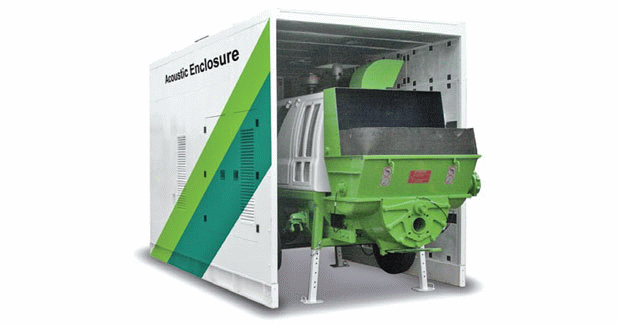
Concrete Pump Safety
The world is moving towards the goal of sustainable development to make energy efficient, no noise or in reduction of noise and mainly in reducing carbon emissions. The health hazards involved in operating a concrete pump has to be avoided in a project execution. In closed surfaces, the pump to be operated should not exceed 85 decibels. The pump should be in sound mechanical maintenance to avoid permanent hearing loss damage. Schwing Stetter India has created a solution for completely making its equipment for no noise levels while the pump is pumping concrete.
Noise is measured on a logarithmic scale instead of a linear scale. This means that if machine A is 85 dB and machine B is 88 dB, machine B is, in fact, twice as loud as machine A. On many construction sites, noise levels can be difficult to control. However, if a noise level assessment shows that workplace noise exposure exceeds 85 dB(A) over an eight-hour timeframe, the employer must implement hazard controls such as:
- Elimination (for example, substituting noisy equipment for less noisy equipment, or using less noisy work processes)
- isolation (for example, noise-reducing booths where noisy portable work can be conducted)
- minimisation (for example, reducing worker exposure to the noise by conducting noisy work at less busy times of the day or night, increasing employees? working distances from noise sources, and providing hearing protection and conducting health monitoring).
Carbon monoxide should not be inhaled more than 200 parts per million (ppm) in air. This emanates from execution of projects in closed surfaces like tunnels, metros, dams, nuclear power plants, thermal power plants, etc. While the concrete mix and concrete chemicals mixed to be created has to be ensured keenly that no carbon monoxide is being produced.
Wet cement should not come into contact with skin. When construction chemicals like chromium salts are mixed along with the cement, the workers are affected by allergic dermatitis within 24-48 hours of exposure. Research shows that between 5-10 per cent of construction workers are usually affected by this. Affected workers will have to leave the industry if the symptom becomes serious in case of recurrent exposure to wet cement mixed with chemicals.
Safety gears like gloves, waterproof footwear, safety goggles, helmet, long loose clothing, adequate first aid kits and an emergency helpline available at all times while using a concrete pump in a project execution even at a remote site location. Concrete pump equipment placement at a site is very critical to ensure that no overhead power line or electrical line comes into 4 m distance from it.


 +91-22-24193000
+91-22-24193000 Subscriber@ASAPPinfoGlobal.com
Subscriber@ASAPPinfoGlobal.com